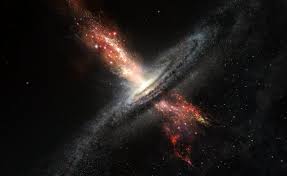Coordination:
José Afonso
Scope:
One of the most challenging and exciting frontiers in current astrophysical knowledge is galaxy formation. The fundamental observation of objects well within the first Gyr of the Universe is still scarce, and theory is unavoidably uncertain about the mechanisms ruling galaxy build-up at those early ages. What we currently do know is that starformation and accretion into massive black holes, fundamental for galaxy assembly, are already well established as early as 800 Myr after the Big Bang. In particular, the recent detection of powerful quasars at those epochs imply an amazingly rapid growth, previously considered impossible, of supermassive black holes, and suggest that the observation of even earlier counterparts, in particular at radio wavelengths, is within our grasp.
During the last few years, our team has explored new radio selection techniques and studied the problems associated with the emission of synchrotron radiation at an epoch where an extremely energetic Cosmic Microwave Background exists. This work has showed us how to reach the highest redshifts, and, as a result, we have recently revealed what is likely the most distant radio-selected AGN ever found, breaking a record that has hold for almost 20 years. This has also demonstrated the importance of exploring the most powerful telescope currently in operation, the Atacama Large Millimetre Array (ALMA), for the efficient determination of the redshift to very distant sources – in particular if they are not selected by their bright optical or near-infrared emission.
In this project we propose to extend our past work and definitely enter the Epoch of Reionisation (EoR) using radio observations, and start to understand how the Universe changed from being essentially neutral, at an age of 380000 years, to completely ionised 900 million years after the Big Bang. By exploring various state of-the-art simulations of galaxy formation and evolution, we will better understand the kind of sources we can detect in the EoR and how to do it efficiently. We will make full use of our recently built expertise on the Atacama Large Millimetre Array, which led to the international recognition of the Portuguese ALMA Centre of Expertise, to identify very high redshift objects. This will open the door to a new epoch in the study of the early Universe, as the future SKA will then be capable of directly imaging the HI 21cm forest against the distant radio galaxies we reveal.
The research proposed here will also help to maintain a strong presence of Portuguese researchers as users and supporters of the revolutionary ALMA. This continues to be fundamental to keep the Portuguese community even more present at the forefront of astronomical research, taking full advantage of the opportunities created by the national participation in ESO and ESA.

